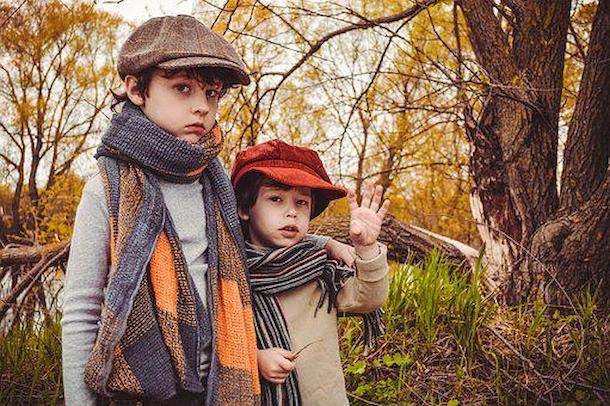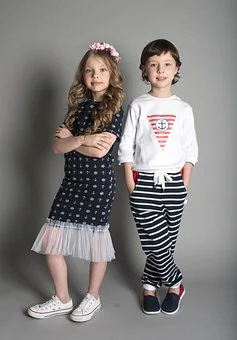
We should all make an effort to save money when it comes to families of any size. There are a lot of places where we can cut costs, but buying clothes for the kids is a significant one!
There are several ways to cut costs in this area because children go through many stages and sizes of clothing. Being creative and planning ahead is key to saving a lot of money.
Table of Contents
Tips To Save Money On Kids’ Clothes
1. Buy Pieces, Not Outfits
A group of child-size mannequins dressed in adorable coordinated outfits is typically the first thing you see when you enter a children’s clothing store or department. For instance, you might see one mannequin wearing a colorful blouse, a plaid jumper, a cardigan, and adorable hair clips next to another wearing a pair of crisp pants, a polo shirt, a striped sweater, and a matching hat.
Stores purposefully arrange their displays in that manner to trick you into purchasing more. They are hoping you will feel compelled to purchase the entire set once you see how adorable all those pieces are when they are all put together.
The issue is that these meticulously coordinated outfits don’t always match your child’s existing wardrobe. That adorable little hat will spend the majority of its time unworn in the closet if it only goes with that particular polo shirt and striped sweater. Single adorable outfits aren’t nearly as useful as mix-and-match accessories that your child can use with a variety of outfits.
Consider how much use your child could get out of each piece before spending the money on the entire set. If that plaid jumper would go well with a half-dozen shirts your child already owns, great; you can buy it and get six new outfits instead of just one. But disregard it if the vibrant blouse that was displayed with it really wouldn’t match anything other than the jumper.
2. Check Out Clearance
Skip those displays at the front of the store entirely to save even more money. Go straight for the clearance racks at the back of the store instead. In order to make room for new collections, stores frequently move unsold goods to this area. They mark it down to alluringly low prices in an effort to move it off their shelves.
The prices in the clearance section are typically even lower, even during a store-wide sale. Imperfectly Perfect Mama blogger Brandi Michel claims that while the clearance section frequently features markdowns of 50% to 70%, the teaser prices in the front of the store are typically only 20% to 30% off the original retail price.
And even better, items in the clearance section occasionally qualify for discounts during storewide sales. A $20 set of pajamas may be purchased for only $4.20, which is just 21% of the original cost, if it has already been marked down by 70% and another 30% as a result of the sale.

3. Know When The Sales Are
Every year, sales are held at a lot of stores. You can be sure to save money if you find out when these are. If you spend a certain amount, these stores will also give you coupons and cash offers. Gymboree is known for having sales where if you spend $50 one week, you get $25 to spend the following week. There will be fantastic sales during the holidays at almost every store. Easter, Memorial Day, July 4th, Labor Day, Thanksgiving, and Christmas are the best holidays to shop around, off the top of my head
4. Visit Discount Retailers
Where you shop and when you shop both matter when it comes to receiving discounts. Compared to name-brand boutiques and department stores, a variety of retail establishments offer much cheaper prices on children’s clothing. These include:
- Discount Superstores. Compared to other department stores, big-box discount retailers like Target and Walmart offer children’s clothing at more affordable rates. For instance, you can find short- and long-sleeved T-shirts for $3 to $16 and sweaters for $7 to $26 in the children’s section of Walmart.
- Off-Price Retailers. Discount stores like T.J. Maxx, Marshalls, Ross, and Burlington purchase excess inventory from manufacturers, such as unsold clothing and other products, for less than their normal wholesale price. After that, they give the discount to customers. The parent company of T.J. According to Maxx and Marshalls, prices in its stores are typically 20% to 60% less than those at regular retail.
- Liquidation Stores. Big Lots and other liquidation retailers buy goods that other retailers are unable to sell. Some of it is from closing or moving stores, some of it is slightly crooked or damaged, and some of it simply didn’t sell. Consumers can buy these products from liquidators for dirt cheap. The condition of the clothing must be determined in order to determine whether it is suitable for wear, but many items are absurdly affordable and undamaged.
5. Try Garage Sales
Thrift stores are a mixed bag when it comes to pricing. However, there is one place to find used children’s clothing that consistently has great deals: garage sales.
Finding the precise clothing your children require at a yard sale is not always simple. You might have to dig through an unorganized pile of clothing because vendors don’t always display their goods well. What you do find, though, is probably going to be extremely inexpensive. The majority of clothing sells for no more than $1 per item, according to an Angi (formerly Angie’s List) price guide.
Garage sales, like end-of-season sales, are great places to stock up on clothing in advance. You can purchase inexpensive clothing for your children in sizes that you don’t anticipate them outgrowing for years, provided that you have enough storage space at home.
Amy Dacyczyn, author of “The Complete Tightwad Gazette,” kept a complete “filing system” for children’s clothing in her attic, with distinct boxes for boys and girls of every age, from toddler to adolescent. She filled these boxes with hand-me-downs and yard sale finds so that her six kids would always have clothes to grow into.
6. Find Online Sellers
Consider shopping online for used clothing if there aren’t any good thrift stores nearby. Parents can sell their children’s outgrown and unneeded clothing for extra money or store credit on websites like Kidizen, eBay, Swap.com, and ThredUp. Despite the fact that costs differ according to size and garment type, many items can be found for less than $10.
The inability to physically inspect clothing as you can in a store is a drawback of online shopping. Read all product descriptions thoroughly to prevent unpleasant surprises. To ensure that the clothing will fit your child, whenever possible, check the exact measurements and the label’s size. Examine the components and washing guidelines as well.
The Internet can also be used to locate local vendors who want to sell their children’s used clothing. Simply use your local Craigslist group or the Facebook Marketplace to search for what you need. Even used children’s clothing is freely available on Freecycle.
When purchasing locally, it’s a good idea to exercise caution. Instead of going into a stranger’s house, make arrangements to meet there. On Freecycle, you can often arrange a “porch pickup,” collecting items from the donor’s front stoop rather than going inside
7. Buy Clothing that is Versatile
Matching outfits can be enjoyable, but in reality, they limit your options because you are limited to wearing those specific pieces of clothing together, which makes you need more clothing. Pick items that you can mix and match easily as much as you can. The key to this is to stick with simple, neutral colors.
8. Buy Gender-Neutral Clothing
Purchasing gender-neutral clothing is a smart idea if you intend to have more kids. When your first child outgrows them, you can store them away until you need them for your second child, and so on.
If you want to give the outfits a more gender-specific look, pair those yellow, green, and tan items with a sweet pink headband or a tiny blue bow tie.
You can use this method to save money on nursery supplies, which can add up quickly. When you need to customize your nursery for each child, all you have to do is add a few items in accent colors that are specific to the child’s gender.
Final Word
You should involve your children more in the process of shopping as they get older. When they participate in the clothing selection process, they will not only be happier with the clothes they receive but also have the opportunity to see all the money-saving techniques you employ. When they’re living on their own, these pointers and tricks will be extremely helpful.
Your children might even be prepared to handle all of their shopping by the time they are teenagers. Give them a clothing allowance by breaking up the total amount of money you allocated for their clothing over the course of the year into monthly payments.
You might be surprised to see how adept your teenage children become at stretching their clothing dollars once they realize that this money must pay for all of their clothing purchases and that no amount of pleading will get Mom or Dad to buy them anything extra.






